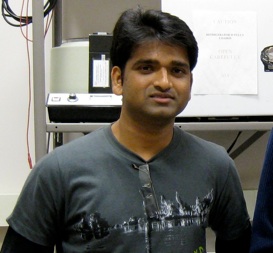Rigved Epur










1178A Benedum Hall
Department of Materials Science and Engg
University of Pittsburgh, Pittsburgh
PA 15261
Email: rre5@pitt.edu
Phone: 412 624 3376 (office)
412 584 3579 (cell)
web page: www.pitt.edu/~rre5
Depletion of non-renewable sources like oil has encouraged the automobile industry to explore alternative energy sources with no CO2 emissions. Li-ion batteries proved to be the best fit for such an alternative clean energy source which has already been developed by several automakers as hybrid electric vehicles. It is also currently the main power source for most of the portable electronics like cell phones, laptops and other communication devices. Graphite, with a theoretical capacity of 372mAh/g, has been used as the anode material in the commercially made lithium ion batteries. Due to the growing demand for high energy density, better cyclability and high rate capability, research has been focussed on developing new materials that will perform better than the existing anode materials. Our group has previously developed Si/C and Si/C/SWNT composites which have shown to have high reversible capacity, energy density and excellent capacity retention.
